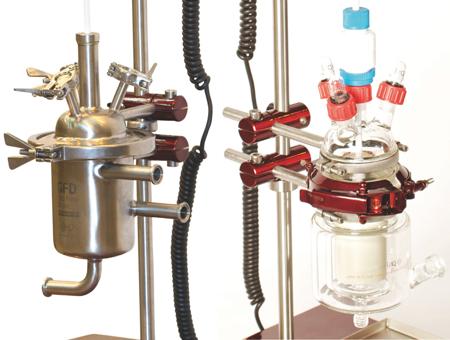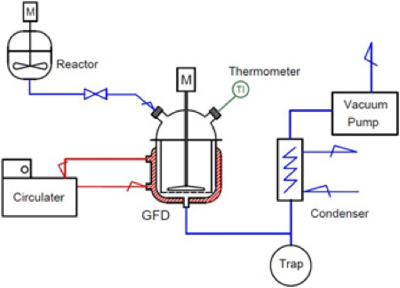The GFD technology changed the filtration and drying process in laboratories worldwide and in 2014 Powder Systems Ltd (PSL) welcomes a newcomer: the Metallic Lab Nutsche Filter Dryer.
The GFD nustche filter dryer launched four years ago can now be found in more and more pharmaceutical and drug discovery laboratories around the world. Since the 19th century chemists have used the commonly known method of Buchner filtration, which would then be followed by the use of a vacuum dryer or other method to complete the drying phase.
The GFD technology combines filtration, cake washing and drying all in one step and product is fully recovered through the unique filtration basket.
Due to its direct scale-up abilities, this vacuum lab filtration and drying unit is ideal for feasibility studies and trials before investing in a large scale nutsche agitated filter dryer. To take the units scalability a step further, a new addition is launched in 2014 to satisfy even more laboratory’s needs: a metallic vessel GFD.
The rising demand for higher pressure requirement and exact replicate of pressured ANFD drove PSL, the manufacturer, to develop an alternative technology to its best seller, the lab Glass Filter Dryer.
The GFD Lab Filter Dryer is now available in glass borosilicate 3.3, stainless steel 316L and alloy C22.

PSL Mini Lab GFD in stainless steel and glass
The full range uses the same accessories, including control box and drive system for the agitator, allowing true flexibility between the different vessels.
The GFD products range from the smallest size ‘Mini Lab’ GFD with 0.002m2 filtration basket for a total volume of 0.3L and can filter a cake volume up to 0.1L; this is a suitable piece of equipment for lab scale trials.
Then the ’Lab’ GFD size includes a removable filtration basket of 0.01m2 for a cake volume around 0.5L for small scale synthesis, when the ‘Maxi Lab’ GFD is used within kilo-laboratory for a cake volume of 5L with 0.05m2 filtration area.
How does it work?
The slurry enters the vessel through one of the nozzles located on the vessel lid. During the filtration phase, vacuum is pulled at the bottom of the vessel while the unique filter basket collects the product. It is then possible to wash the cake, again using a nozzle of choice on the lid to introduce the solvent and the heated vessel jacket if required.
It is common practice to apply pressure to the top of the filter cake during filtration whilst the bi-directional motor is running in a clockwise direction to smooth the cake. Optimal filtration is achieved in this way as you can pressure filter with no cracks in the cake.
The heated jacket is then used to heat the vessel for the drying phase. The vessel is rated to temperatures between -25°C and 150°C, and it is not uncommon for the GFD to be also used for the filtration of unstable products at low temperatures. The bi-directional motor is lowered into the cake during this phase and is now used in the anti-clockwise direction to dig into the cake thus resulting in the homogeneous drying of the product.

Typical installation of the lab GFD

